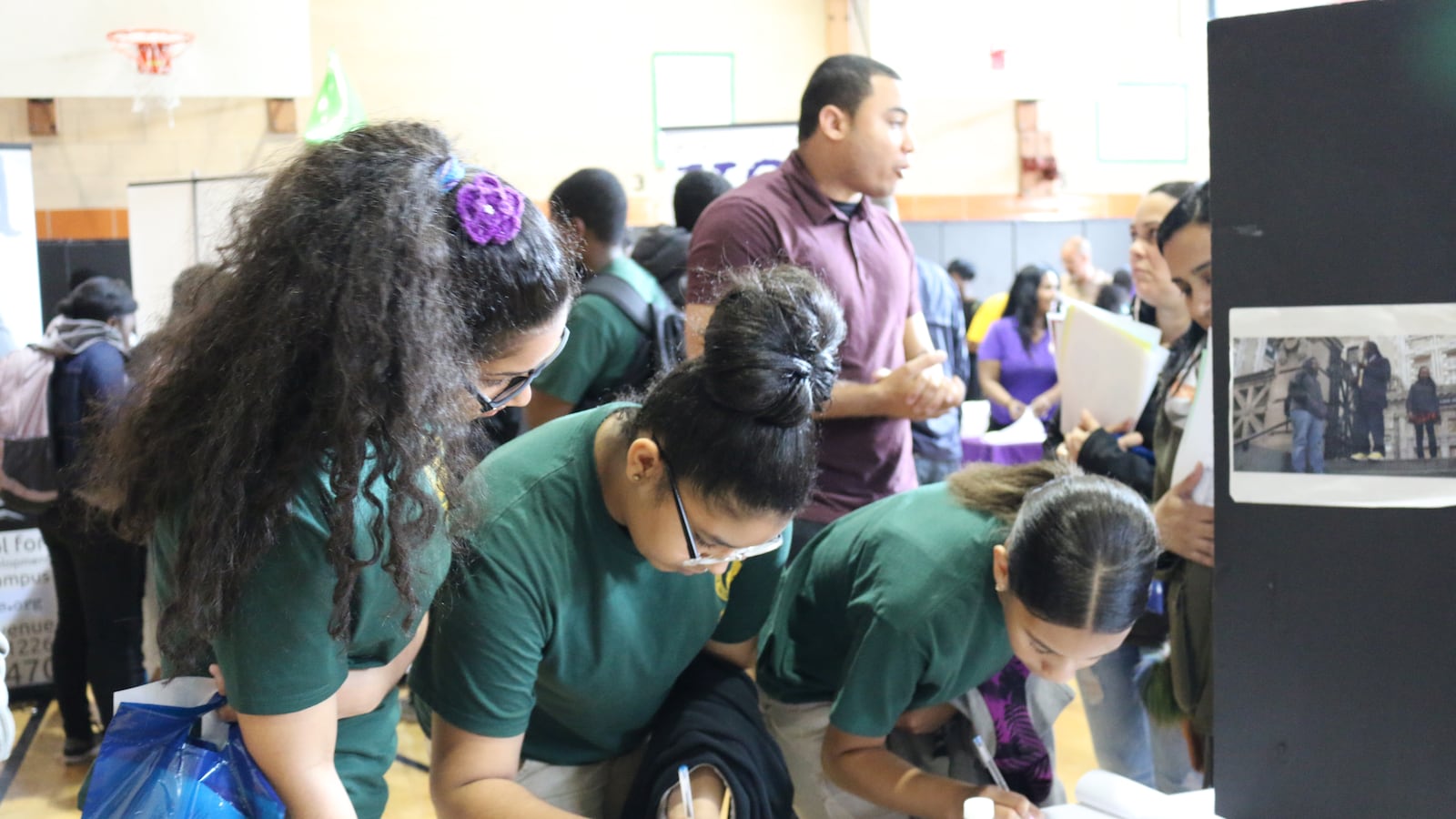To help New York City students steer clear of high schools that are less likely to graduate students, it helps to whittle down their options.
That’s according to a new study, conducted by researchers across four universities, that provides insight into how relatively small interventions can change the behavior of city students as they sift choose among more than 400 high schools.
Aiming to answer questions about whether the city’s complex high school admissions process can be improved, the researchers gave students in 165 high-poverty middle schools a customized list of 30 New York City high schools with information about each high school. Every school on the “Fast Facts” list had a graduation rate above 70 percent and was within a 45-minute commute of the student’s middle school.
Researchers found that students who received Fast Facts were more likely than a control group to match with their first-choice school and were less likely to match with schools that had graduation rates below 70 percent.
Giving students more information, such as lists of non-selective schools or schools organized by theme, muted the benefits. Students who got the extra details were more likely to match to their first-choice school — but less likely than students who saw only the “Fast Facts” to avoid low-performing schools.
“Providing more information on top of the basic list dampened their use of the tool,” said Sean Corcoran, a New York University researcher who worked on the study. “It’s overwhelming.”
The findings could be useful if the city seeks to make its complex severely segregated high school system more fair. With more than 400 school options and a maze of admissions rules, the system favors families with the time and savvy to more easily maneuver through the difficult process. Even high-performing students from weak middle schools often do not try to gain admission to the city’s top high schools.
City officials say they are already tackling that dynamic.
“Each year, we continue to make the high school choice process easier and more accessible for families,” said education department spokesman Douglas Cohen. He added that the city has provided more translated copies of the high school directory, added more information to the directory and launched a tool called NYC School Finder.
Important questions remain about what is gained by steering individual students toward more high-performing schools. After all, simply attending a high school with a higher graduation rate does not guarantee that an individual student will benefit from that environment. Additionally, from a systemic perspective, if some students are admitted to more high-performing schools, others inevitably must fill seats at schools with lower-graduation rates.
Corcoran acknowledged these concerns but pointed out that some students can be steered to high schools that go relatively unnoticed — not only to those with competitive admissions processes.
“Everybody knows the brand-name high schools that everybody wants to go to,” Corcoran said. But, he said, more information can lead families to find the “under-the-radar high schools that are performing well but aren’t household names.”
That effect, the researchers found, is more likely among some students than others. Students from non-English-speaking households were more likely to benefit from the Fast Facts.
In a more troubling finding, white and Asian students who received Fast Facts were approximately 14 and 15 percent less likely to match with schools whose graduation rates sunk below 70 percent. Hispanic and black students, on the other hand, were about 6 and 2 percent less likely to match with the low-performing schools.
The differences were notable, Corcoran said, but not always statistically significant. It’s also important, he said, to keep in mind that all students in the study came from high-poverty middle schools, so many of the white students were immigrants from places like Russia or the Middle East rather than relatively affluent New Yorkers who are already able to navigate the school system.
Still, he said the study’s findings suggested that Fast Facts alone would not resolve New York City’s high school admissions inequities.
“Information is not necessarily an equalizer,” Corcoran said. “If you provide information to everyone, it may turn out that it doesn’t level the playing field, but makes it more uneven.”
This story has been updated to include a statement from New York City education department officials.

